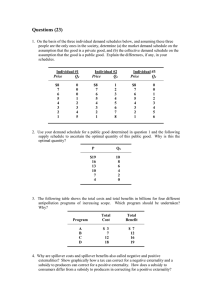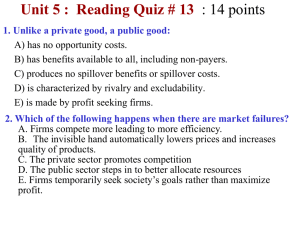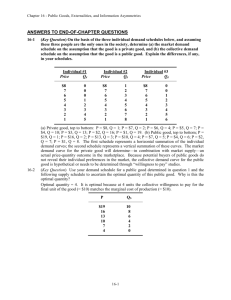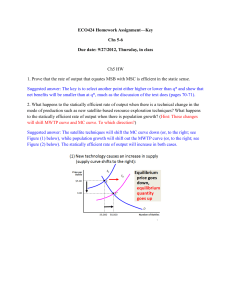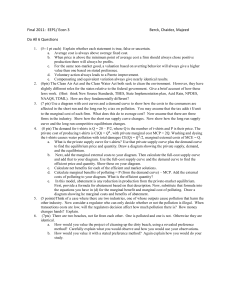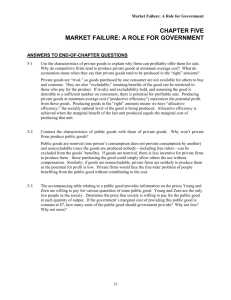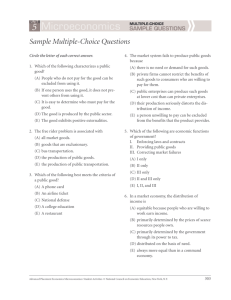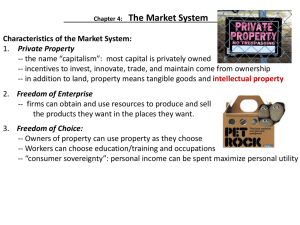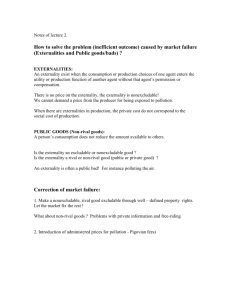Chapter 16 Key Question Solutions
advertisement
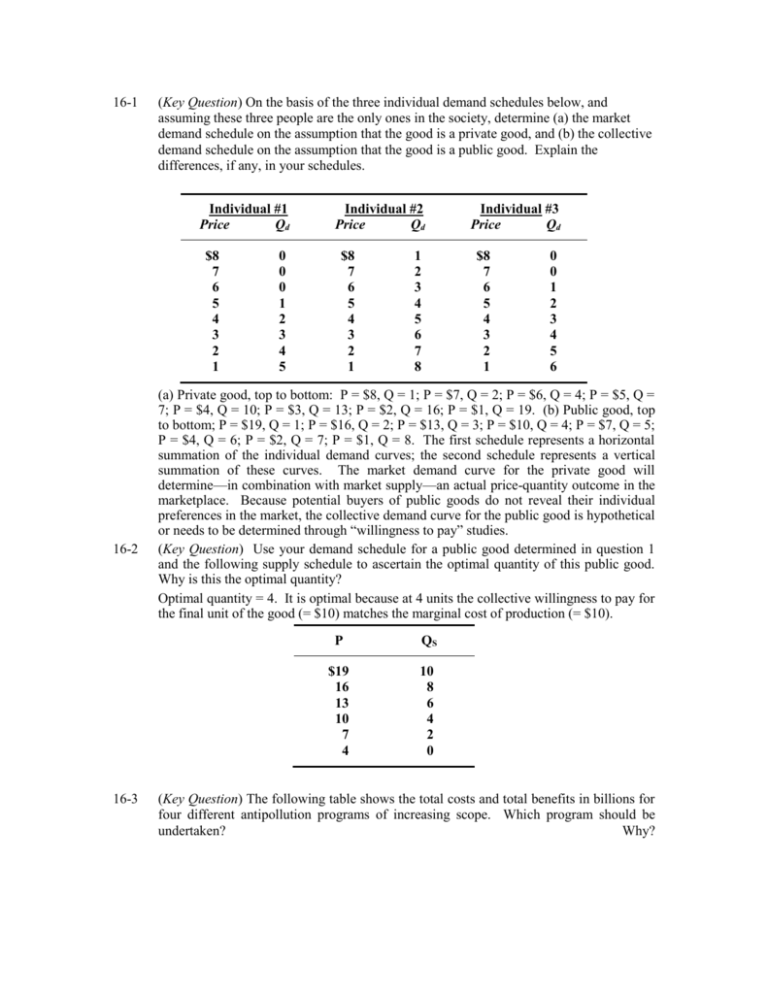
16-1 (Key Question) On the basis of the three individual demand schedules below, and assuming these three people are the only ones in the society, determine (a) the market demand schedule on the assumption that the good is a private good, and (b) the collective demand schedule on the assumption that the good is a public good. Explain the differences, if any, in your schedules. Individual #1 Price Qd $8 7 6 5 4 3 2 1 16-2 16-3 0 0 0 1 2 3 4 5 Individual #2 Price Qd $8 7 6 5 4 3 2 1 1 2 3 4 5 6 7 8 Individual #3 Price Qd $8 7 6 5 4 3 2 1 0 0 1 2 3 4 5 6 (a) Private good, top to bottom: P = $8, Q = 1; P = $7, Q = 2; P = $6, Q = 4; P = $5, Q = 7; P = $4, Q = 10; P = $3, Q = 13; P = $2, Q = 16; P = $1, Q = 19. (b) Public good, top to bottom; P = $19, Q = 1; P = $16, Q = 2; P = $13, Q = 3; P = $10, Q = 4; P = $7, Q = 5; P = $4, Q = 6; P = $2, Q = 7; P = $1, Q = 8. The first schedule represents a horizontal summation of the individual demand curves; the second schedule represents a vertical summation of these curves. The market demand curve for the private good will determine—in combination with market supply—an actual price-quantity outcome in the marketplace. Because potential buyers of public goods do not reveal their individual preferences in the market, the collective demand curve for the public good is hypothetical or needs to be determined through “willingness to pay” studies. (Key Question) Use your demand schedule for a public good determined in question 1 and the following supply schedule to ascertain the optimal quantity of this public good. Why is this the optimal quantity? Optimal quantity = 4. It is optimal because at 4 units the collective willingness to pay for the final unit of the good (= $10) matches the marginal cost of production (= $10). P QS $19 16 13 10 7 4 10 8 6 4 2 0 (Key Question) The following table shows the total costs and total benefits in billions for four different antipollution programs of increasing scope. Which program should be undertaken? Why? Program Total Cost Total Benefit A B C D $ 3 7 12 18 $ 7 12 16 19 Program B since the marginal benefit no longer exceeds marginal cost for programs that are larger in scope. Plan B is where net benefits—the excess of total benefits over total costs—are maximized. 16-4 (Key Question) Why are spillover costs and spillover benefits also called negative and positive externalities? Show graphically how a tax can correct for a negative externality and a subsidy to producers can correct for a positive externality. How does a subsidy to consumers differ from a subsidy to producers in correcting for a positive externality? Spillover costs are called negative externalities because they are external to the participants in the transaction and reduce the utility of affected third parties (thus “negative”). Spillover benefits are called positive externalities because they are external to the participants in the transaction and increase the utility of affected third parties (thus “positive”). To show how taxes and subsidies can correct externalities, see Figures 16.3 and 16.4. Compare (b) and (c) in Figure 16.4. 16-7 (Key Question) Explain the following statement, using the MB curve in Figure 16.6 to illustrate: “The optimal amount of pollution abatement for some substances, say, water from storm drains, is very low; the optimal amount of abatement for other substances, say, cyanide poison, is close to 100 percent.” Reducing water flow from storm drains has a low marginal benefit, meaning the MB curve would be located far to the left of where it is in the text diagram. It will intersect the MC curve at a low amount of pollution abatement, indicating the optimal amount of pollution abatement (where MB = MC) is low. Any cyanide in public water sources could be deadly. Therefore, the marginal benefit of reducing cyanide is extremely high and the MB curve in the figure would be located to the extreme right where it would intersect the MC curve at or near 100 percent. 16-12 (Key Question) Place an “M” beside items in the following list that describe a moral hazard problem and an “A” beside those that describe an adverse selection problem. a. A person with a terminal illness buys several life insurance policies through the mail. b. A person drives carelessly because he or she has automobile insurance. c. A person who intends to “torch” his warehouse takes out a large fire insurance policy. d. A professional athlete who has a guaranteed contract fails to stay in shape during the off-season. e. A woman anticipating having a large family takes a job with a firm that offers exceptional child-care benefits. Moral hazard problem: (b) and (d). Adverse selection problem: (a), (c), and (e).
